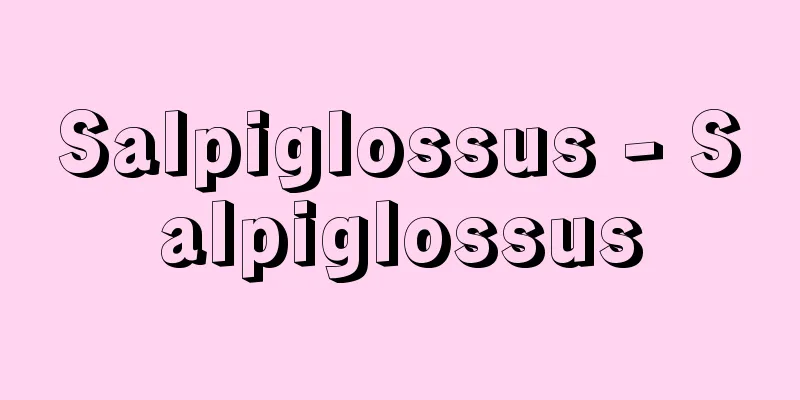Seto Inland Sea

|
This is an area of sea surrounded by the coasts of the Kinki, Chugoku, Shikoku, and Kyushu regions of western Japan. It stretches 440 kilometers from east to west, 5 to 50 kilometers from north to south, has a circumference of about 1,300 kilometers, and an area of about 9,500 square kilometers. The coastline stretching from east to west forms a complex coastline with 3,000 islands of all sizes, and features some of the most outstanding natural scenery in the world, with the majority of it designated as a national park. It is noted as an area of sea that has played an extremely important role in transportation, politics, and culture throughout Japanese history. [Hajime Miura] BorderThe western edge is Hayatomo-no-Seto (eastern part of the Kanmon Strait), the southwest edge is Hayasui-Seto (Hoyo Strait), and the southeastern edge is connected to the open sea by the narrow straits of Tomogashima-Suido (Kitan Strait) and Naruto-Seto (Naruto Strait), and it has been called Setouchi or the Seto Inland Sea, referring to the area inside these four straits. In the narrow sense, it can refer to the area west of the Akashi Strait and Naruto Strait, and in the broad sense, as in the "Special Measures Law for the Conservation of the Environment of the Seto Inland Sea" (1978), the southeastern boundary is sometimes defined as the line from Hinomisaki Lighthouse in Wakayama Prefecture to Kamoda Misaki in Tokushima Prefecture in the Kii Channel. [Hajime Miura] NatureGeologically, the Seto Inland Sea and its surrounding areas are a wide east-west depression in the southern part of the inner belt of southwestern Japan, and from the Pliocene to the Pleistocene (Pleistocene) epochs, wavy crustal movements with alternating uplifts and subsidences with a northeast-southwest axis were added to it, forming the general shape of the Seto Inland Sea region. Parts of it were lakes and inland seas, but as sea levels dropped during the Ice Age, the entire Seto Inland Sea became land, with the Kitan River flowing east and the Bungo River flowing west, with the Bisan Seto as its watershed. After the Würm glacial period, the sea level began to rise, and seawater began to seep in from the Kii Channel and Bungo Channel, and it is believed that the Seto Inland Sea as it is today was formed at the beginning of the Holocene (Alluvial Epoch), around 8,000 years ago. The sea level continued to rise after that, and around 5,000 years ago the sea level was about 6 to 7 meters higher than today. The sea penetrated deeply in many places, creating submerged coastlines, and islands such as Awaji Island, Shodo Island, Bisan Islands, Geiyo Islands, and Boyo Islands appeared alternately with large bodies of water such as Osaka Bay, Harima Nada Sea, Bingo Nada Sea, Iyo Nada Sea, and Suo Nada Sea, creating a complex distribution of land and sea that reflected the unique ground movements and topographical structures that had existed up until that point. The sea level then dropped slightly, and around 2,500 years ago the sea and land distribution settled into the current distribution pattern. Of course, many areas later expanded into plains due to the development of delta plains and the creation of artificial reclaimed land and reclaimed land. The tides in the Seto Inland Sea are caused by the flow of ocean water through the Kii Channel to the east and the Kanmon Strait and Hoyo Strait to the west, but the tidal difference near the Shiwaku Islands, where the east-west tidal currents meet, can reach a maximum of four meters. Strong tidal currents in the narrow Seto Straits between the islands make many difficult passages, with maximum currents reaching five knots in Akashi Strait and Hoyo Strait, eight knots in Hayatomo Seto, and over ten knots in Kurushima Strait and Naruto Strait. The depth of the Seto Inland Sea is around 20-40 meters in the beach areas, but in straits known for their rapid currents, the seabed has been eroded by the violent tidal currents, creating deep depressions called kaifu. For example, a ribbon-shaped valley about 100 meters deep has been dug in the Akashi Strait, and between Ozuchi Island and Kozuchi Island in the Bisan Seto, there are two basins, 89 meters deep on the east side and 79 meters deep on the west side. In the Bungo Strait, the deepest basins in the inland sea are known to exist, reaching depths of 360 meters on the south side and 460 meters on the north side. The Setouchi region is known as the Setouchi climate, and is characterized by its low rainfall. In summer, southeasterly winds cross the Shikoku Mountains, and in winter, northwesterly winds cross the Chugoku Mountains and enter the Setouchi region. In both cases, they become downdrafts, resulting in many sunny days. The annual rainfall is 1,000-1,500 mm, and many areas have more than 2,200 hours of sunshine per year. However, because the sea is shallow, the seawater temperature in winter is low, and in the Suo-Nada and Bingo-Nada Seas it can be around 8°C, 10°C lower than the Kuroshio Current in the open ocean. Therefore, even in coastal cities, for example, the average January temperature in Okayama (3.4°C) tends to be colder than Tottori (3.9°C) in the Sanin region. The thick fog that is common from April to June is also caused by the inflow of warm and humid air from the south into the inland sea, where the low winter temperatures remain, and at this time, maritime accidents are likely to occur in the Suo-Nada and Harima-Nada Seas. Furthermore, the inland sea coast, where the summer heat is intense, is a place where sea and land breezes caused by the temperature difference between land and sea are often evident, and the windless conditions when the sea breezes alternate with the land breezes are known as morning calms and evening calms. [Hajime Miura] historyHuman habitation in the Seto Inland Sea region dates back to at least the Paleolithic period, and ruins are known on Ishima, Yoshima, and Hitoshi Islands in the center of the inland sea, as well as Kokubudai in Takamatsu City, but at that time the inland sea was still a large area of land. Early Jomon shell mound ruins, with freshwater shellfish in the lower layer and saltwater shellfish in the upper layer, have been discovered on Kijima Island in Okayama Prefecture and Kotsuta Island in Kagawa Prefecture, so the history of the inland sea period began around this time. During the Jomon period, when sea levels were high and the climate was warm, there are numerous ruins that tell of the hunting and fishing lifestyles of various Jomon periods scattered around the Okayama Plain, the coast of Matsunaga Bay, Hiroshima Bay, and the coast of Yamaguchi Prefecture. Sanukite from Kanayama in Sakaide City and obsidian from Himeshima in Oita Prefecture were widely transported to various coastal areas as materials for stone tools, showing the spread of the cultural sphere through inland sea transportation. Around the 3rd century BC, the Yayoi culture, centered on rice cultivation, was introduced from the continent. It quickly spread and became established throughout western Japan, from Kitakyushu, through the Seto Inland Sea, to Kinki and the coast of Ise Bay. As early as the early Yayoi period, two major cultural spheres were established, centered on Kitakyushu and Kinai, and the Seto Inland Sea became an important corridor connecting the east and west. Even during the Kofun period, many of the huge burial mounds in Kibi and Kinai were built using Aso tuff transported from production areas in Kitakyushu via the inland sea for their coffins, and the largest keyhole-shaped burial mounds in the region, such as the Shiratori burial mound on the Kumage Peninsula in Yamaguchi Prefecture, the Ainotani No. 1 burial mound on the Takanawa Peninsula in Ehime Prefecture, and the Kurosakiyama burial mound on the coast of Matsunaga Bay in Hiroshima Prefecture, occupy bases on inland sea routes. This suggests that the Seto Inland Sea played a variety of roles as a cultural artery during the formation of the ancient nation under the Yamato government. The people responsible for ancient water transport were known as the Amazoku, and included the Munakata and Sumiyoshi tribes, who based themselves on the coast of Kitakyushu and gradually colonized the inland sea area, excelling in salt production, fishing, and shipbuilding techniques. The history of salt production in the inland sea is long, and the Bisan Islands are famous for the Kofun period salt production ruins where Shiraku-style pottery was excavated, and similar pottery salt production was widely carried out in various places from Awaji Island in the east to the coast of Ube, Yamaguchi Prefecture in the west. In the Nara period, salt production was replaced by iron pot salt production, and as the development of salt beaches progressed, salt manors by aristocrats and temples from the central area also appeared on Yuge Island, Shiwaku Island, Innoshima Island, and other islands. In the Heian period, as manors developed, the transportation of goods via inland seas rapidly increased, but before long, the seas became infested with pirates taking advantage of the decline in law and order. In particular, the rebellion led by Fujiwara no Sumitomo, which spread across the entire Seto Inland Sea from Settsu in the east to Dazaifu in the west, shocked the central government. Towards the end of the Heian period, the Taira clan, who had been successful in suppressing pirates, gradually came to control the navies of various inland seas. The clan gained great influence, acquiring fiefs and numerous estates throughout the western provinces stretching from Kinai to Kyushu. In particular, Taira Kiyomori, who became the first Grand Minister of State to come from a military family, placed great importance on overseas trade, renovating Owada Port, allowing Song ships to enter the port, improving inland sea routes, and was a devout believer in Itsukushima Shrine, the patron saint of maritime traffic. However, the prosperity of the Taira clan did not last long, as they were pursued from Kyoto by eastern samurai groups led by the Minamoto clan, and they were involved in repeated battles in the Seto Inland Sea. However, the Kumano and Iyo Kono navies sided with the Minamoto clan, and they were destroyed at Dannoura in Nagato in 1185 (Bun'ei 1). In the Kamakura period, social tensions temporarily increased along the sea routes of the western provinces due to the Jōkyū Rebellion and the Mongol invasion, but the Kamakura shogunate strengthened its control by appointing many eastern samurai to the posts of shugo and jito in the western provinces, and inland waterway transport became active due to the transportation of manors' annual tributes and goods from various regions. As the ruins of Kusado Sengenchō (Kawazu on the Ashida River in Hiroshima Prefecture), where large quantities of Song coins and pottery have been excavated, attest, the commodity economy also developed, and port cities such as Hyogo, Ushimado, Tomo, Onomichi, and Yanai prospered. From the end of the Kamakura period to the time of the conflict between the Northern and Southern Courts, many of the local warriors of the Inland Sea belonged to the Southern Court, built castles at key points along the shipping routes and collected tolls. They were also known as pirates, some of whom went overseas and became wako (Japanese pirates). Ashikaga Yoshimitsu of the Muromachi Shogunate subjugated these Inland Sea pirates and opened the Kan'ei trade between Japan and Ming, but the Hosokawa clan of Sanuki, the Akamatsu clan of Harima, and the Ouchi clan of Suo also tried to expand into overseas trade. In particular, the Ouchi clan, who controlled the Kanmon Straits, took the lead in trade between Japan and Ming from the end of the Muromachi period to the Sengoku period by controlling the western half of the Inland Sea with the Murakami Navy as their guards, and the Yamaguchi area below their castle prospered to the point that it was called the Kyoto of the West. In 1588 (Tensho 16), the Toyotomi government issued strict sword hunting and piracy suppression orders, which eventually led to the disappearance of the inland sea pirates and their incorporation into the feudal system. The Edo Shogunate then banned overseas travel with its Kan'ei isolationist order, but this, combined with the progress of industrial development in each domain, ushered in a revolutionary era of inland sea shipping. The traditional route along the Sanyo coast was called "ji-nori" and official sea stations were established in Osaka, Hyogo, Murotsu, Ushimado, Shimotsui, Tomo, Onomichi, Kamagari, Kaminoseki, Shimonoseki, and other places, and these routes were used by feudal lords on alternate attendance routes, Korean envoys, Ryukyu envoys, and merchants from Dejima in Nagasaki. Meanwhile, with the development of the Nishimawari Sea Route, goods from the Japan Sea coast began to arrive in Osaka via Shimonoseki, and the traffic of large Kitamae ships also became more popular, leading to the development of new island port towns such as Kinoe, Mitarai, and Karowat along the "Oki-nori" sea route. Large-scale reclaimed land was also created one after another along the coast, and the coastal salt fields, which began in the Ako region in particular, quickly spread to other areas such as Sakaide in Sanuki and Mitajiri in Suo, resulting in the establishment of the Setouchi Jushu Salt Fields, which accounted for 90% of the salt produced in Japan. This was also due to the development of shipping along the western Japan coast, mainly via inland sea transport, which led to the development of markets nationwide. After the transformational period of the Meiji Restoration at the end of the Edo period, the Meiji era began. In 1901 (Meiji 34), the Sanyo Railway was fully extended to Shimonoseki, and the situation of inland waterway transportation changed dramatically. Sailboats were replaced by motor sailing ships and large steamships, and small port towns that waited for the wind or tide declined. Shimonoseki, Kobe, and Osaka developed as trading ports, and international shipping routes converged here. Meanwhile, with the progress of industrial modernization and the growth of the Hanshin industrial area, spinning industries began in Kurashiki, Hiroshima, and other areas, a naval arsenal was established in Kure, shipyards in Kobe, Tamano, and Innoshima, copper refining and chemical industries in Niihama, and coal mining and chemical industries in Ube. Combined with the development of the steel industry in Kitakyushu and the Chikuho coalfields, the Seto Inland Sea increasingly played a role as an industrial canal in western Japan. [Hajime Miura] industryThe Setouchi region, which was developed long ago and is densely populated, lacks flat land and has many islands, so the small amount of farmland has been used intensively and diversified. Since the early modern period, in addition to rice, wheat, and sweet potatoes, a wide variety of commercial crops have been grown, including sugarcane in Sanuki, cotton in Bizen, rapeseed in Bitchu, and rush grass in Bingo. Even today, reservoirs and irrigation canal networks have been developed in the Sanuki and Okayama plains, where there is little rain, and they are the production areas of high-quality Sanuki rice and Bizen rice. The hilly area in the northern part of the Okayama plain is a national fruit-growing region for white peaches and muscat grapes. Island agriculture is also diverse, with floriculture on Awaji Island, Manabe Island, Mukai Island, and Nomi Island, and citrus fruit cultivation on Ikuchi Island, Innoshima Island, Osakikami Island, Osakishimo Island, Kurahashi Island, and Suo-Oshima. Awaji Island is also known as a pioneer in the breeding of Japanese beef cattle and dairy farming. Although the inland sea area is narrow, the arrangement of beaches and straits, the complex coastal topography, the currents and other ocean conditions allow for a wide variety of fish species and fishing methods. The catch is not small, but fishing villages developed along the coast and islands early on, and the catch per fisherman is about one-quarter of the national average, with most of the fishing being small-scale, artisanal coastal fishing. Popular fishing methods include small bottom trawl, single-line fishing, gill nets, longlines, boat seine nets and octopus traps, with large catches of shrimp, sardines, horse mackerel, sea bream, flounder, sea cucumber and octopus. This accounts for about 4% of the total catch in the country. In particular, in recent years, the construction of reclaimed land has caused the loss of inland bays, which are spawning grounds for fish, in many places, and fish populations are declining due to overfishing, seawater pollution caused by industrial and urban wastewater, and the occurrence of red tides, so efforts are being made to shift to aquaculture and farming fisheries. Oyster farming in Hiroshima Bay, which has been known since the Edo period, is the largest in the country, and yellowtail farming in Higashikagawa City, Kagawa Prefecture, and kuruma prawn farming in Aio Bay, Yamaguchi Prefecture are also well known. In the Setouchi region, cotton textile production, which could be called a rural industry, had been thriving since the Edo period, in the vicinity of the cotton-growing areas along the Sanyo coast, but as early as the Meiji period, spinning factories were established in Okayama, Kurashiki, Fukuyama, Hiroshima, and other places. From the Taisho period onwards, with the development of minerals such as the undersea coalfields of Ube and the Besshi copper mine, machinery and chemical industries arose in Ube, Onoda, and Niihama, raw material (salt)-oriented soda industries were established in Tokuyama and Ube, which are close to the salt production areas, water-based chemical fiber industries were established in Mihara, Matsuyama, Iwakuni, and Hofu, and shipbuilding industries advanced to Tamano, Innoshima, and Onomichi. Industrial towns were established in various places, but they had not yet developed into a unified Setouchi industrial region. After the Second World War, the conversion of former military land and the creation of large-scale reclaimed land led to the rapid development of coastal heavy chemical industries, centered on advanced steel and petrochemicals, in various places. The main ones are the petrochemical complexes in Mizushima, Iwakuni, Tokuyama, Onoda and Matsuyama, the steel industries in Hirohata, Mizushima, Fukuyama and Kure, and the automobile industries in Hiroshima, Hofu and Mizushima. The Setouchi industrial region accounts for about 10% of national production, and is characterized by a large number of large, highly efficient factories even when viewed from a national perspective. [Hajime Miura] Folklore and TourismThe Setouchi region has been a frequent site of cultural exchange since ancient times, connecting the continent, Kitakyushu and Kinai, and is said to be a treasure trove of cultural assets, with many traditional events and customs that convey historical customs. "Ebune" boats, which convey the customs of the ancient sea people, have almost disappeared, but until recently, families would board fishing boats and use them as homes, drifting around the inland seas to fish, with wives and daughters selling their catches using pole-and-line fishing, longlines, and casting nets. Their parent villages were Noji, Yoshiwa, and Futamado in Mihara Seto, Hiroshima Prefecture, and they settled in various places and formed branch villages, with as many as 100 fishing villages stretching from Shodoshima and Ushimado in the east to Ube in Yamaguchi Prefecture in the west. In the towns where the wives and daughters of houseboats called at, they could be seen carrying fish on their heads in buckets called "hanbou" and selling them until before World War II. This custom of carrying things overhead is called Itadaki or Kaberi, and is seen on islands with many slopes, including the islands of Ogijima, Megijima, Sanagijima, and Takamijima in the Bisan Islands. The densely populated islands of the inland sea have been migrant workers since the late Edo period. In Tajima, Hiroshima Prefecture, Iwai Island, and Nagashima, people traveled to Goto Islands in Kyushu as whaling crews, shipwrights in the Shiwaku Islands and Innoshima, stonemasons in Ochi County, Ehime Prefecture, sake brewers in Iyo-Oshima and Iwai Island, and traveling merchants in Nogutsuna Island and Mutsuki Island in Ehime Prefecture traveled to various parts of the mainland. The mobility and openness of the islanders' lives is noteworthy. The custom of young women from the islands going to cities in the Hanshin region to work as maids continued until the Second World War, from Shodo Island in the east to the islands around Kaminoseki in Yamaguchi Prefecture in the west. There were also many overseas immigrants, and Suo-Oshima in Yamaguchi Prefecture has been famous as the home village of immigrants to Hawaii and America since the Meiji period. Many of the annual festivals and rituals have distinctive features that are characteristic of the Inland Sea. These include the summer festival "Suho-dei" at Iminomiya Shrine in Chofu, Shimonoseki City, the secret "Mekari Festival" held on New Year's Day in the lunar calendar at Sumiyoshi Shrine in Ichinomiya, Nagato, the magical ritual "Urateno Shinto Ritual" (Urateno Sumo) at Tamaoya Shrine in Suo-Ichinomiya, Hofu City, the "One-man Sumo" against the rice field god at the rice planting festival at Oyamazumi Shrine on Omishima Island in Imabari City, Ehime Prefecture, and the "Kamanari Shinto Ritual" at Kibitsu Shrine in Okayama Prefecture. These are valuable as they convey the ancient customs of the people that date back to ancient times. A famous colorful sea festival is the Kangensai (wind festival) at Itsukushima Shrine on Miyajima in Aki, one of the Three Scenic Views of Japan, where a boat carrying a phoenix palanquin and accompanied by numerous boats carrying gagaku music travels back and forth across the strait to the Jigozen Shrine on the opposite bank, which can be said to be a reenactment of a picture scroll depicting the imperial court. The Sentei-sai (for the former emperor) festival at Akama Shrine in Shimonoseki City, which enshrines Emperor Antoku, who also has ties to the Heike clan, is held on the 23rd day of the fourth month of the lunar calendar, the anniversary of his death at the Battle of Dannoura, and is a unique festival that includes a visit to the Joro. The boat dance "Kaineri" (oar training) of the Kashima Festival in Matsuyama City, Ehime Prefecture, which is associated with the Iyo Navy, is also called "Kaidenma" (oar train). Similar tenma boat races can be seen in Hakozaki, Innoshima, Osakikamijima, Kamagarijima, and other places. Kotohira Shrine in Sanuki, known as the guardian deity of the sea, attracted nationwide faith during the Edo period, along with pilgrimages to Ise Shrine. Signposts and lanterns of the "Konpira Road" remain along the Konpira Highway, and even today, four million tourists visit the shrine annually. Also, the "Eyo" at Kannon-in Temple in Saidaiji, Okayama Prefecture, is a spring festival known as a naked festival in which participants compete to seize two sacred trees, while the Tamatori Festival at Itsukushima Shrine is a summer naked festival in which young men compete in the sea to seize a jewel. The Shikoku 88 Temple Pilgrimage is a folk pilgrimage of sacred sites, and there are abbreviated versions of this called the Shikoku 88 Temple Pilgrimage in various places, each with its own unique features, such as Awaji Island, Shodo Island, Iyo-Oshima, Suo-Oshima, and Yamaguchi Prefecture's Akiho Peninsula, and is a religious event that is quintessentially springtime in the Setouchi region. In response to this new transportation revolution, three routes for the Honshu-Shikoku Bridge were planned for the Setouchi region, with the Kojima-Sakaiide route completed in 1988, the Kobe-Naruto route in 1998, and the Onomichi-Imabari route in 1999. [Hajime Miura] "The Seto Inland Sea, volumes 1 and 2, edited and published by the Chugoku Shimbun Press (1960)" ▽ "Historical Studies of Inland Sea Industries and Water Transport, edited by Fukuo Takeichiro (1966, Yoshikawa Kobunkan)" ▽ "The Climate and History of the Seto Inland Sea, written by Taniguchi Sumio and others (1978, Yamakawa Publishing)" ▽ "The Seto Inland Sea - Seen from the Sky, edited by the editorial staff of Iwanami Shoten (1990, Iwanami Shoten)" ▽ "The Dragonfly Book : Island Tours in the Seto Inland Sea, written by Midorikawa Yoichi, Okaya Koji and Komoda Fuji (1991, Shinchosha)" ▽ "A Study of the Seto Inland Sea: The Development of Islands and the Formation of Their Society - With a Focus on the Settlement of Fishermen, written by Miyamoto Tsuneichi (1992, Miraisha)" ▽ "The Seto Inland Sea National Park, photographed by Morita Toshitaka (1993, Mainichi Shimbun)" ▽ "Suma Aqualife Park (ed.), "Setouchi 100 Fish 100 Tales - The Amusing Fishes of the Seto Inland Sea" (1994, Kobe Shimbun General Publishing Center)" ▽ "Shindo Matsuji, "Fishing and Life in the Western Seto Inland Sea" (1994, Heibonsha)" ▽ "Matsubara Hironobu (ed.), "The Development of Exchange in the Seto Inland Sea Region" (1995, Meishu Publishing)" ▽ "Matsubara Hironobu, "Ancient States and Transportation in the Seto Inland Sea" (2004, Yoshikawa Kobunkan)" ▽ "Ishino Hironobu (ed.), "Ancient Sea Routes - International Exchange in the Ancient Seto Inland Sea" (1996, Gakuseisha)" ▽ "Okaichi Tomotoshi, Komori Seiji, Nakanishi Hiroshi (eds.), "The Biological Resources and Environment of the Seto Inland Sea - For the Future" (1996, Koseisha Koseikan)" ▽ "Walking the Seto Inland Sea, volumes 1 and 2, written by the Chugoku Shimbun "Walking the Seto Inland Sea" reporting team (1998 , Chugoku Shimbun)" ▽ "The Nature and Environment of the Seto Inland Sea, edited by Yanagi Tetsuo and supervised by Goda Ken (1998, Kobe Shimbun General Publishing Center)" ▽ "Studies in the History of the Medieval Seto Inland Sea Region, written by Yamauchi Yuzuru (1998, Hosei University Press)" ▽ "The Culture and Environment of the Seto Inland Sea, edited by Shirahata Yozaburo, supervised by Goda Ken, planned and edited by the Seto Inland Sea Environment Conservation Association (1999, Kobe Shimbun General Publishing Center) " ▽ "Environmental Linguistics of the Seto Inland Sea Region, edited by Muroyama Toshiaki and Fujiwara Yoichi (1999, Musashino Shoin)" ▽ "The Seto Inland Sea as Seen by Residents - Taking the Sea into Our Hands, edited by the Seto Inland Sea Circumference Conference (2000, Technology and Humanity)" ▽ "The Sea and Climate: Life and Exchange in the Seto Inland Sea Region," edited by the Local History Research Council (2002, Yuzankaku)" ▽ "My Guide to the Seto Inland Sea," by Nobuhiko Obayashi (2002, Iwanami Junior Shinsho)" ▽ "The Discovery of the Seto Inland Sea: From a Landscape of Meaning to a Landscape of Vision," by Masanori Nishida (Chuko Shinsho) [References] | | Bridge| | | | |Itsukushima Shrine| | | | | | | | | | | | | Islands|Kami-Kamagari Island|Kanmon | |Kitan | |Kurushima Strait| | | | | | | | | | | Nada | Seto Bridge | | Taira no Kiyomori | Takane | Nakajima | | Island | Hayatomo- | | | | Bingo Nada | Fujiwara no Sumitomo | Futagami Island | Taira | | | | | Mukojima | | |A view from Mt. Washu, Shimotsui, Kurashiki City, at the southern tip of the Kojima Peninsula. The Great Seto Bridge (Kojima-Sakaide Route of the Honshu-Shikoku Bridge) spans the area. Setonaikai National Park. Kurashiki City, Okayama Prefecture / Sakaide City, Kagawa Prefecture ©Ministry of the Environment "> Bisan Seto and the Great Seto Bridge View from Hinoyama Park in Shimonoseki City. Shimonoseki City, Yamaguchi Prefecture and Kitakyushu City, Fukuoka Prefecture ©Yamaguchi Prefecture Tourism Federation Hayatomonoseto View from the Awaji Island side. The southern tip of Narugashima Island, with its sandbar stretching out to the left, and the Tomogashima Islands (Okinoshima Island and Jinoshima Island) can be seen in the background. Setonaikai National Park. Sumoto City, Hyogo Prefecture / Wakayama City, Wakayama Prefecture ©Ministry of the Environment "> Kitan Strait Benten Island is in the center of the photo, and Sensui Island is in the background. Setonaikai National Park. Nationally designated scenic spot, Fukuyama City, Hiroshima Prefecture ©Hiroshima Prefecture "> Tomonoura Hofu City, Yamaguchi Prefecture ©Yamaguchi Prefecture Tourism Federation Fortune-telling ritual at Tamasuso Shrine Akama Shrine, Shimonoseki City, Yamaguchi Prefecture ©Yamaguchi Prefecture Tourism Federation Former Emperor's Festival Matsuyama City, Ehime Prefecture © Ehime Prefecture Tourism and Products Association Kashima Oar Training Saidaiji, Okayama City, Okayama Prefecture ©Okayama Tourism and Convention Association Saidaiji Temple's Eyo Festival (Naked Festival) Source: Shogakukan Encyclopedia Nipponica About Encyclopedia Nipponica Information | Legend |
|
西日本の近畿、中国、四国、九州の諸地方の沿岸部によって囲まれた海域。東西約440キロメートル、南北約5~50キロメートル、周囲は約1300キロメートル、面積約9500平方キロメートルに及ぶ。東西に延びる沿岸は大小3000もの島をもつ複雑な海岸線を形成し、世界的にも傑出した自然景観を展開し、その主要部は国立公園となっている。日本の歴史を通じて、交通、政治、文化上きわめて重要な役割を演じてきた海域として注目される。 [三浦 肇] 境域西端は早鞆ノ瀬戸(はやとものせと)(関門海峡東部)、南西端は速吸瀬戸(はやすいせと)(豊予(ほうよ)海峡)、南東部は友ヶ島水道(紀淡海峡)と鳴門瀬戸(なるとのせと)(鳴門海峡)の狭隘(きょうあい)な瀬戸によって外海に通じ、これら四瀬戸の内側の意をもって、瀬戸内(せとうち)あるいは瀬戸内海とよばれてきた。狭義には明石(あかし)海峡および鳴門海峡以西をいうこともあり、また広義には、「瀬戸内海環境保全特別措置法」(1978)のように、その南東界を紀伊水道の和歌山県日ノ御埼(ひのみさき)灯台―徳島県蒲生田岬(かもだみさき)の線までをその範囲とする場合もある。 [三浦 肇] 自然瀬戸内海とその周辺は、地質構造上は西南日本内帯南部の幅広い東西方向の窪地(くぼち)帯にあたり、それが鮮新世から更新世(洪積世)にかけて、北東―南西方向の軸をもつ隆起部と沈降部が交互に並ぶ波状の地殻変動が加わって、瀬戸内地方の起伏の概形ができあがった。その一部は湖水や内海となっていたが、氷河時代に海面が低下したため、瀬戸内海全域が陸化し、備讃瀬戸(びさんせと)付近を分水界として紀淡川が東流し、豊後(ぶんご)川が西流していた。氷河時代最後のビュルム氷期以降海面が上昇し始め、紀伊水道や豊後水道から海水が浸入してきて、ほぼ現在の瀬戸内海が形成されたのは完新世(沖積世)の初め、いまから8000年前ごろとみなされている。その後も海進は続いて、約5000年前ごろの海面は現在より6~7メートル程度高かった。至る所で深く海が入り込んだ沈水海岸線をつくり、淡路(あわじ)島、小豆(しょうど)島、備讃諸島、芸予(げいよ)諸島、防予(ほうよ)諸島などの島嶼(とうしょ)群と、大阪湾、播磨灘(はりまなだ)、備後(びんご)灘、伊予灘、周防(すおう)灘のような広い水域とが交互に現れ、それまでの特異な地盤運動と地形構造を反映した複雑な海陸の配置をつくりだした。その後わずかに海面が低下して、2500年前ごろにほぼ現在の海陸の分布形態に落ち着いたのである。もちろん、その後各地で三角州平野の発達や人工の干拓地、埋立地の造成によって平野部が広がった所も多い。 瀬戸内海の潮汐(ちょうせき)は、東は紀伊水道、西は関門海峡・豊予海峡を通じて外洋水が出入りすることによって生ずるが、東西からの潮流の出合う塩飽諸島(しわくしょとう)付近での干満差は最大4メートルに達する。島嶼間の狭い瀬戸では強い潮流のため、航路上の難所をなす所も多く、とくに明石海峡や豊予海峡では最大5ノット、早鞆ノ瀬戸で8ノット、来島(くるしま)海峡や鳴門海峡では10ノット以上にも達する。瀬戸内海の水深は、灘の部分では20~40メートル程度であるが、急潮で知られる海峡では激しい潮流の侵食によって海底が削られ、海釜(かいふ)とよばれる深い窪地ができている。たとえば明石海峡では水深約100メートルの帯状の谷が掘り込まれており、備讃瀬戸の大槌(おおづち)島―小槌(こづち)島間には東側に水深89メートル、西側に79メートルの二つの海釜があり、豊予海峡では南側に水深360メートル、北側に460メートルにも達する内海最深の海釜の存在が知られている。 瀬戸内地方はとくに瀬戸内気候とよばれる日本でも特色ある少雨地帯である。夏は南東風が四国山地を越えて、冬は北西風が中国山地を越えて瀬戸内に入ったとき、いずれも下降気流となって晴天が多くなる。年降水量は1000~1500ミリメートルで、日照時間も年間2200時間以上の所が多い。しかし海が浅いので冬の海水温は低く、周防灘や備後灘では8℃前後のこともあって外洋の黒潮より10℃も低い。したがって沿岸の都市でもたとえば岡山の1月平均気温(3.4℃)は、山陰の鳥取(3.9℃)より寒い傾向がみられる。また、4月から6月に多い濃霧も、冬の低温が残る内海に、南から暖湿な気流が流入するため発生するもので、このころ周防灘や播磨灘では海上事故が起こりやすい。さらに夏の暑さの厳しい内海沿岸は海陸の温度差に起因する海陸風のよく発現する所で、海風と陸風の交替時の無風状態は朝凪(あさなぎ)・夕凪として知られる。 [三浦 肇] 歴史瀬戸内海地方における人類居住の始まりは少なくとも旧石器時代にさかのぼり、内海中央の井島(いしま)、与島(よしま)、櫃石(ひついし)島や高松市国分台(こくぶだい)などでその遺跡が知られているが、そのころはまだ内海は広い陸地であった。岡山県の黄島(きじま)や香川県の小蔦(こつた)島には下層に淡水産の、上層に海水産の貝類を出土する縄文早期の貝塚遺跡が発見されているから、このころから内海時代の歴史が始まるのである。海面の高かった縄文時代は気候も温暖で、岡山平野周辺、松永湾岸、広島湾岸、山口県沿岸などには、縄文各期の狩猟や漁労生活を物語る遺跡が点々と分布し、坂出(さかいで)市金山(かなやま)のサヌカイトや大分県姫島の黒曜石(こくようせき)が石器材料として広く沿岸各地に運ばれ、内海水運を通じての文化圏の広がりを知ることができる。 紀元前3世紀ごろ、稲作を主とする弥生(やよい)文化が大陸からもたらされると、急速に北九州から瀬戸内を経て近畿、伊勢(いせ)湾岸に至る西日本一帯に伝播(でんぱ)、定着して、弥生前期に早くも北九州と畿内(きない)を中心とする二大文化圏が成立し、瀬戸内海はこの東西を結ぶ重要な回廊地帯となった。古墳時代にも、吉備(きび)や畿内の巨大古墳のなかには、その石棺材料として阿蘇(あそ)凝灰岩が北九州の産地から内海を経由して輸送されたものが数多くあることや、山口県熊毛(くまげ)半島の白鳥(しらとり)古墳、愛媛県高縄(たかなわ)半島の相ノ谷1号古墳、広島県松永湾岸の黒崎山古墳などその地域最大の前方後円墳が、内海航路の拠点に占地していることなどからみても、大和(やまと)政権による古代国家形成期に瀬戸内海が文化動脈として多彩な役割を果たしたことがうかがえる。古代の水運を担った人々は海人族(あまぞく)といわれ、これには宗像(むなかた)系と住吉(すみよし)系とあって、それぞれ北九州沿岸を本拠としてしだいに内海一帯に植民し、製塩、漁労、造船の技術に秀でていた。内海における製塩の歴史は古く、備讃諸島で発見された師楽(しらく)式土器を出土する古墳時代の製塩遺跡が有名で、同じような土器製塩は東は淡路島から西は山口県宇部沿岸に至るまで広く各地で行われていた。奈良時代に入って鉄釜(かま)製塩にかわり、塩浜の開発が進むと、弓削(ゆげ)島、塩飽島、因島(いんのしま)などのような中央の貴族・社寺による塩荘園(しょうえん)も現れてきた。 平安時代になると荘園の発達とともに内海水運による物資輸送が急増したが、やがて治安の乱れに乗じて海賊の出没する海となり、なかでも、東は摂津(せっつ)から西は大宰府(だざいふ)まで瀬戸内海全域を舞台とした藤原純友(すみとも)の反乱は中央政府に強い衝撃を与えた。平安末期、海賊の討伐に功のあった平氏は、しだいに内海各地の水軍を支配下に繰り入れ、その一門は畿内から九州に及ぶ西国一帯に知行(ちぎょう)国や多くの所領荘園を有して強大な勢力を培い、とくに武門出身最初の太政(だいじょう)大臣となった平清盛(きよもり)は、海外貿易を重視して大輪田泊(おおわだのとまり)を修築し、宋(そう)船の入港を図り、内海航路の整備を進め、海上交通の守護神である厳島(いつくしま)神社を厚く信仰した。しかし平氏一門の繁栄も長くはなく、源氏を中心とする東国武士団の追撃によって京都を追われ、瀬戸内海を舞台とする攻防戦を繰り返したが、熊野水軍や伊予河野(こうの)水軍の源氏への加担によって、1185年(文治1)長門(ながと)壇之浦において滅亡した。 鎌倉時代に入って承久(じょうきゅう)の乱や蒙古(もうこ)襲来のために西国の海路は一時社会的緊張を増したが、鎌倉幕府は西国地方の守護・地頭(じとう)に多く東国武士を任じて統制を強化したから、内海水運は荘園年貢や諸国物資の輸送によって活発となった。大量の宋銭や陶器類を出土した草戸(くさど)千軒町(広島県芦田(あしだ)川の河津)の遺跡が物語るように商品経済も発達して、兵庫、牛窓(うしまど)、鞆(とも)、尾道(おのみち)、柳井(やない)など港湾都市が栄えた。鎌倉末期から南北朝争乱の時代には、内海の土豪(どごう)武士たちの多くは南朝に属し、航路上の要所に築城して警固料(通行税)を取り立て、海賊衆ともよばれ、その一部は海外に出て倭寇(わこう)となった。室町幕府の足利義満(あしかがよしみつ)はこれら内海の海賊衆を制圧して日明(にちみん)間に勘合貿易を開いたが、讃岐(さぬき)の細川氏、播磨の赤松氏、周防の大内氏なども海外貿易に進出を試みた。とくに関門海峡を押さえる大内氏は室町末期から戦国時代にかけて村上水軍を警固衆として内海西半を制することにより日明貿易の主導権を握り、その城下山口は西の京都とよばれるほどの繁栄をみた。 1588年(天正16)豊臣(とよとみ)政権による厳しい刀狩令と海賊鎮圧令によってやがて内海海賊衆は姿を消し、封建体制下に組み込まれ、さらに江戸幕府は寛永(かんえい)の鎖国令によって海外渡航を禁じたが、各藩の産業開発の進展と相まって、画期的な内海水運時代を迎えるのである。山陽沿岸寄りの従来からの航路は「地乗り」と称して、公式の海駅として大坂に始まって兵庫、室津(むろつ)、牛窓、下津井(しもつい)、鞆、尾道、蒲刈(かまがり)、上関(かみのせき)、下関などには本陣、番所が設けられ、参勤交代の諸大名、朝鮮信使、琉球(りゅうきゅう)使節、長崎出島商人などがこの公路を利用した。一方、西廻航路(にしまわりこうろ)の開発によって、日本海沿岸の物資が下関を経由して大坂に集まるようになると、大型の北前船(きたまえぶね)の航行も盛んとなり、「沖乗り」航路に沿って、新しく木江(きのえ)や御手洗(みたらい)、鹿老渡(かろうと)など島嶼の港町が繁栄するようになった。また沿岸各地で次々と大規模な干拓地が造成されたが、とくに赤穂(あこう)地方に始まった入浜式塩田は急速に讃岐の坂出や周防の三田尻(みたじり)など各地方に伝播し、全国製塩の9割を占める瀬戸内十州塩田が成立した。これも、内海水運を中心とする西日本沿岸海運の発達によって、全国的市場の開発が進んだためである。 幕末・維新の変革期を経て、明治時代に入り、1901年(明治34)山陽鉄道が下関まで全通すると、内海水運の事情は大きく変貌(へんぼう)する。帆船は機帆船や大型汽船にかわり、風待ちや潮待ちの小港町は衰退して、下関や神戸、大阪が貿易港として発展し、国際航路もここに集まってきた。一方、産業の近代化が進み、阪神工業地帯の成長に伴い、倉敷や広島など各地に紡績業が始まり、呉(くれ)に海軍工廠(こうしょう)、神戸、玉野、因島に造船所、新居浜(にいはま)には銅精錬と化学工業、宇部には石炭産業と化学工業がおこり、北九州の製鉄業や筑豊(ちくほう)炭田の開発と相まって、瀬戸内海は西日本における産業運河としての機能をますます強めてきた。 [三浦 肇] 産業開発が古く、人口密度も高い瀬戸内地方は平地に乏しく、島嶼も多いので、狭い農地を集約的、多角的に利用してきた。近世以来、米、麦、サツマイモのほか、讃岐のサトウキビ、備前(びぜん)の綿、備中(びっちゅう)の菜種(なたね)、備後の藺草(いぐさ)など多種類の商品作物がつくられた。現在も、雨の少ない讃岐平野や岡山平野では溜池(ためいけ)や農業用水路網が整備され、良質の讃岐米・備前米の産地となり、岡山平野北部の丘陵地一帯は白桃やマスカットの全国的な果樹地域を形成しているし、また島嶼農業も多彩であり、淡路島、真鍋(まなべ)島、向(むかい)島、能美(のうみ)島は花卉(かき)栽培、生口(いくち)島、因島、大崎上(おおさきかみ)島、大崎下(しも)島、倉橋(くらはし)島、周防大島はミカンやネーブルなどの柑橘(かんきつ)栽培に特色がある。また淡路島は和牛飼育、酪農の先進地として知られる。 内海の水産業は、海面は狭いが、灘や瀬戸の配置、複雑な海岸地形、潮流などの海況によって魚種が多く、漁法も多様である。漁獲量も少なくはないが、沿岸や島嶼には早くから漁村が発達し、漁家1戸当りの漁獲は全国平均の4分の1程度で、小規模な零細沿岸漁業が主となっている。漁法では小型底引網、一本釣り、刺網(さしあみ)、延縄(はえなわ)、船引網、たこ壺(つぼ)などが盛んで、エビ、イワシ、アジ、タイ、カレイ、ナマコ、タコの漁獲が多い。全国総漁獲量のなかに占める割合は4%程度である。とくに近年は埋立地の造成によって、魚類の産卵場である内湾が各地で失われ、乱獲や工場・都市排水の影響による海水汚染や赤潮の発生のために魚類は減少傾向にあり、養殖・栽培漁業への転換が図られつつある。すでに江戸時代から知られた広島湾の養殖カキは全国一の生産をあげており、香川県東かがわ市のハマチ養殖、山口県秋穂(あいお)湾のクルマエビの養殖などが知られている。 瀬戸内では江戸時代から山陽沿岸の綿作地帯を控えて、農村工業ともいうべき綿織物の生産が盛んであったが、明治時代に入って早くも岡山、倉敷、福山、広島などに紡績工場の設置をみた。大正時代以降、宇部の海底炭田や別子(べっし)銅山など鉱産開発に伴って、宇部、小野田や新居浜に機械・化学工業がおこり、製塩地に近い徳山や宇部に原料(塩)指向型のソーダ工業、三原、松山、岩国、防府(ほうふ)には用水型の化学繊維工業が立地し、玉野、因島、尾道には造船工業が進出して、各地に分散的に工業都市が成立したが、まだまとまった瀬戸内工業地域として展開をみるまでには至らなかった。第二次世界大戦後は、旧軍用地の転用や大規模な埋立地造成によって、各地で先進的な鉄鋼、石油化学を中心に臨海型の重化学工業化が急速に進展した。主要なものは水島、岩国、徳山、小野田、松山の石油化学コンビナート、広畑、水島、福山、呉の鉄鋼業、広島、防府や水島の自動車工業などで、瀬戸内工業地域の生産は全国の約10%を占めるが、全国的にみても、大規模で高能率の工場が多いことが特色である。 [三浦 肇] 民俗・観光古代から大陸、北九州と畿内を結んで、頻繁に文物の往来した瀬戸内地方は、歴史的な古俗を伝える伝統行事や習俗が多く残され、文化財の宝庫であるともいわれている。 古代海人族の習俗を伝える「家船(えぶね)」は現在はほとんど姿を消したが、近年までは家族が乗り込んで漁船を住居とし、内海各地を漂泊しながら漁労し、一本釣り、延縄、打瀬(うたせ)網などの漁獲物をその妻女が売って歩いた。その親村は広島県三原瀬戸の能地(のうじ)や吉和(よしわ)、二窓(ふたまど)で、各地に定着して枝(えだ)村をつくり、東は小豆島や牛窓から西は山口県宇部までの間に100漁村にも及ぶという。家船の妻女が寄港した町々では、魚を「はんぼう」という桶(おけ)で頭上運搬して行商した姿が第二次世界大戦前までみられた。この頭上運搬の習俗はイタダキともカベリともいい、傾斜地の多い島嶼でもみられ、備讃諸島の男木(おぎ)島、女木(めぎ)島、佐柳(さなぎ)島、高見島などにも残っている。 人口密度の高い内海の島では、すでに江戸時代後期から出稼ぎが行われ、広島県の田島や山口県の祝(いわい)島、長島では九州五島(ごとう)まで出かけて鯨組舸子(くじらぐみかこ)として出稼ぎ、塩飽諸島や因島の船大工、愛媛県越智(おち)郡の石工、伊予大島や祝島の酒造杜氏(とうじ)、愛媛県野忽那(のぐつな)島や睦月(むづき)島では行商人が本土各地に出かけており、島民の移動性と開放性に富む生活には注目すべきものがある。島の若い女性が阪神地方の都市へ出て女中奉公する風習も、東は小豆島から西は山口県上関付近の島々まで広く第二次世界大戦前まで続いていた。また海外移民も多く、山口県周防大島は明治以降ハワイやアメリカ移民の母村として有名である。 年中行事の祭礼、神事のなかにも内海らしい特色のあるものが多い。下関市長府(ちょうふ)の忌宮(いみのみや)神社の夏祭「数方庭(すほうでい)」、長門一宮(いちのみや)住吉神社の旧暦元旦(がんたん)の秘事「和布刈祭(めかりさい)」、防府市周防一宮玉祖(たまのおや)神社の呪術(じゅじゅつ)的儀礼「占手(うらての)神事」(占手相撲(ずもう))、愛媛県今治(いまばり)市大三島大山祇(おおやまづみ)神社のお田植祭に田の神を相手に行う「一人相撲」、岡山県吉備津(きびつ)神社の「釜鳴(かまなり)神事」などは、古代にさかのぼる民族の古俗を伝えるものとして貴重である。 華やかな海の祭典としては、日本三景の一つ安芸(あき)の宮島厳島神社の管絃祭(かんげんさい)が有名で、船上に鳳輦(ほうれん)を載せ、雅楽を奏しながら数多くの供船(ともぶね)を従えて、対岸の地御前(じごぜん)神社まで海峡を往復するもので、王朝絵巻の再現といってよい。同じ平家ゆかりの下関市の安徳(あんとく)天皇を祀(まつ)る赤間神宮の先帝祭(せんていさい)は、壇ノ浦の戦いの旧暦4月23日の忌日に行われ、上﨟(じょうろう)参拝のある異色の祭礼である。 伊予水軍にちなむ愛媛県松山市の鹿島(かしま)祭の船踊り「カイネリ(櫂練り)」は「カイデンマ(櫂伝馬)」ともいう。同じような伝馬船競漕(てんませんきょうそう)は因島箱崎、大崎上島、蒲刈島などでもみられる。海上守護神として知られる讃岐の金刀比羅宮(ことひらぐう)はお伊勢参りと並んで、江戸時代に全国的な信仰を集めた。金毘羅(こんぴら)街道に沿って「こんぴら道」の道標や灯籠(とうろう)が残り、現在でも年間400万の観光客が参詣(さんけい)する。また、岡山県西大(さいだい)寺観音(かんのん)院の「会陽(えよう)」は、2本の神木を奪い合う裸祭として知られる春の祭礼であるが、厳島神社の玉取祭も、海中で若衆が宝珠を奪い合う夏の裸祭である。四国八十八か所を巡る遍路の旅は聖地巡礼の民間信仰で、これを略式化した島四国八十八か所が各地にあり、淡路島、小豆島、伊予大島、周防大島、山口県秋穂半島などそれぞれ特色があり、瀬戸内の春らしい信仰行事である。 なお、瀬戸内地方は新しい交通革命に対応して、本州四国連絡橋が3ルート計画され、1988年には児島―坂出(さかいで)ルートが、1998年(平成10)に神戸―鳴門ルート、1999年に尾道―今治ルートが全通した。 [三浦 肇] 『中国新聞社編・刊『瀬戸内海』上下(1960)』▽『福尾猛一郎編『内海産業と水運の史的研究』(1966・吉川弘文館)』▽『谷口澄夫他著『瀬戸内の風土と歴史』(1978・山川出版社)』▽『岩波書店編集部編『瀬戸内海――空からみた』(1990・岩波書店)』▽『緑川洋一・岡谷公二・古茂田不二著『とんぼの本 瀬戸内海 島めぐり』(1991・新潮社)』▽『宮本常一著『瀬戸内海の研究 島嶼の開発とその社会形成――海人の定住を中心に』(1992・未来社)』▽『森田敏隆写真『瀬戸内海国立公園』(1993・毎日新聞社)』▽『須磨海浜水族園編『せとうち百魚百話――瀬戸内海のゆかいな魚達』(1994・神戸新聞総合出版センター)』▽『進藤松司著『瀬戸内海西部の漁と暮らし』(1994・平凡社)』▽『松原弘宣編『瀬戸内海地域における交流の展開』(1995・名著出版)』▽『松原弘宣著『古代国家と瀬戸内海交通』(2004・吉川弘文館)』▽『石野博信編『古代の『海の道』――古代瀬戸内海の国際交流』(1996・学生社)』▽『岡市友利・小森星児・中西弘編『瀬戸内海の生物資源と環境――その将来のために』(1996・恒星社厚生閣)』▽『中国新聞「瀬戸内海を歩く」取材班著『瀬戸内海を歩く』上下(1998・中国新聞社)』▽『柳哲雄編著、合田健監修『瀬戸内海の自然と環境』(1998・神戸新聞総合出版センター)』▽『山内譲著『中世瀬戸内海地域史の研究』(1998・法政大学出版局)』▽『白幡洋三郎編著、合田健監修、瀬戸内海環境保全協会企画・編集『瀬戸内海の文化と環境』(1999・神戸新聞総合出版センター)』▽『室山敏昭・藤原与一編『瀬戸内海圏 環境言語学』(1999・武蔵野書院)』▽『環瀬戸内海会議編『住民がみた瀬戸内海――海をわれらの手に』(2000・技術と人間)』▽『地方史研究協議会編『海と風土――瀬戸内海地域の生活と交流』(2002・雄山閣)』▽『大林宣彦著『ぼくの瀬戸内海案内』(2002・岩波ジュニア新書)』▽『西田正憲著『瀬戸内海の発見――意味の風景から視覚の風景へ』(中公新書)』 [参照項目] | | | | | | | | | | | | | | | | | | | | | | | | | | | | | | | | | | | | | | | | | | | | | | | | | | | | | | | | | | | |倉敷市下津井、児島半島南端の鷲羽山からの眺望。瀬戸大橋(本州四国連絡橋児島―坂出ルート)が架かる。瀬戸内海国立公園域。岡山県倉敷市/香川県坂出市©環境省"> 備讃瀬戸と瀬戸大橋 下関市火の山公園からの眺望。山口県下関市・福岡県北九州市©一般社団法人山口県観光連盟"> 早鞆ノ瀬戸 淡路島側からの眺望。左手前に砂州が延びる成ヶ島の南端部、奥に友ヶ島(沖ノ島、地ノ島)が見える。瀬戸内海国立公園域。兵庫県洲本市/和歌山県和歌山市©環境省"> 紀淡海峡 写真中央が弁天島、奥が仙酔島。瀬戸内海国立公園域。国指定名勝 広島県福山市©広島県"> 鞆の浦 山口県防府市©一般社団法人山口県観光連盟"> 玉祖神社の占手神事 山口県下関市 赤間神宮©一般社団法人山口県観光連盟"> 先帝祭 愛媛県松山市©一般社団法人愛媛県観光物産協会"> 鹿島の櫂練り 岡山県岡山市 西大寺©公益社団法人おかやま観光コンベンション協会"> 西大寺の会陽行事(裸祭り) 出典 小学館 日本大百科全書(ニッポニカ)日本大百科全書(ニッポニカ)について 情報 | 凡例 |
Recommend
The Great Bunsei Fire
The Great Fire of Edo in 1829 (Bunsei 12). It star...
Izumo region - Izumochiho
...Volcanoes with lava domes, such as Mt. Sanbe i...
Kazusa [town] - Kazusa
An old town in the southwest of the Shimabara Peni...
Sthiramati
…He is one of the ten great scholars of the Yogac...
Bibenzyl
An aromatic hydrocarbon. Also called dibenzyl or 1...
Kyora
…(1) Eight-tone gong: used for the tenth gong. (2...
Interference spectrometer
...It can also be used as a general term for any ...
School newspaper - gakko shinbun
A newspaper is published by children and students...
Epiphany
...It was finally conquered by Sargon II in 720 B...
Audran, E. (English spelling) AudranE
…In this sense, many talismans can be called masc...
Cross-country race
Also called a cross-country race. A long-distance ...
Alim - Alim
...the Islamic scholars and religious leaders. Th...
Subordinate - 10
〘 noun 〙 A general term for subordinate vassals an...
Wolf (Italian law) - Urufu
…an Arabic word meaning the customs and customary...
Human Hole - Human Hole
A cave found at the foot of a volcano. It was form...






![Nishime [town] - Nishime](/upload/images/67cc6d5d41d6b.webp)


